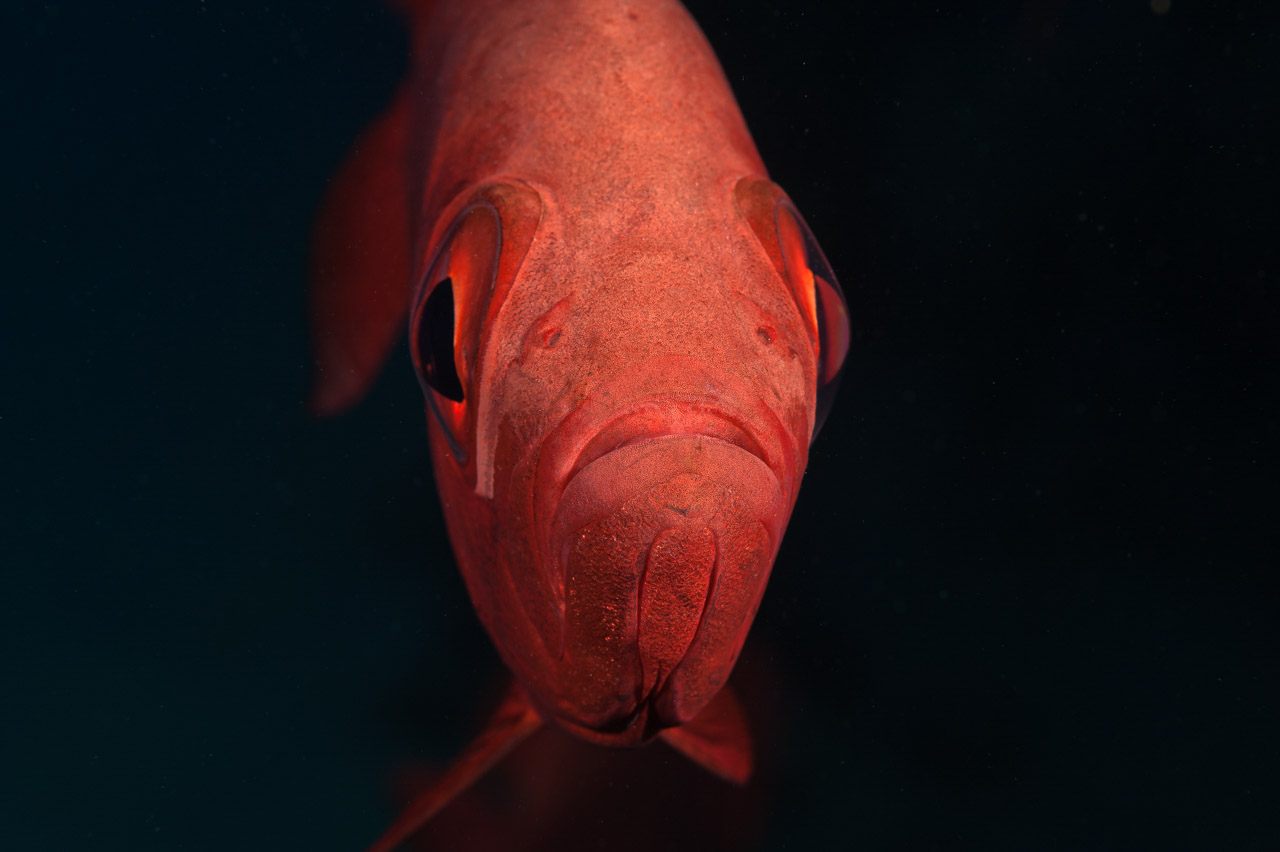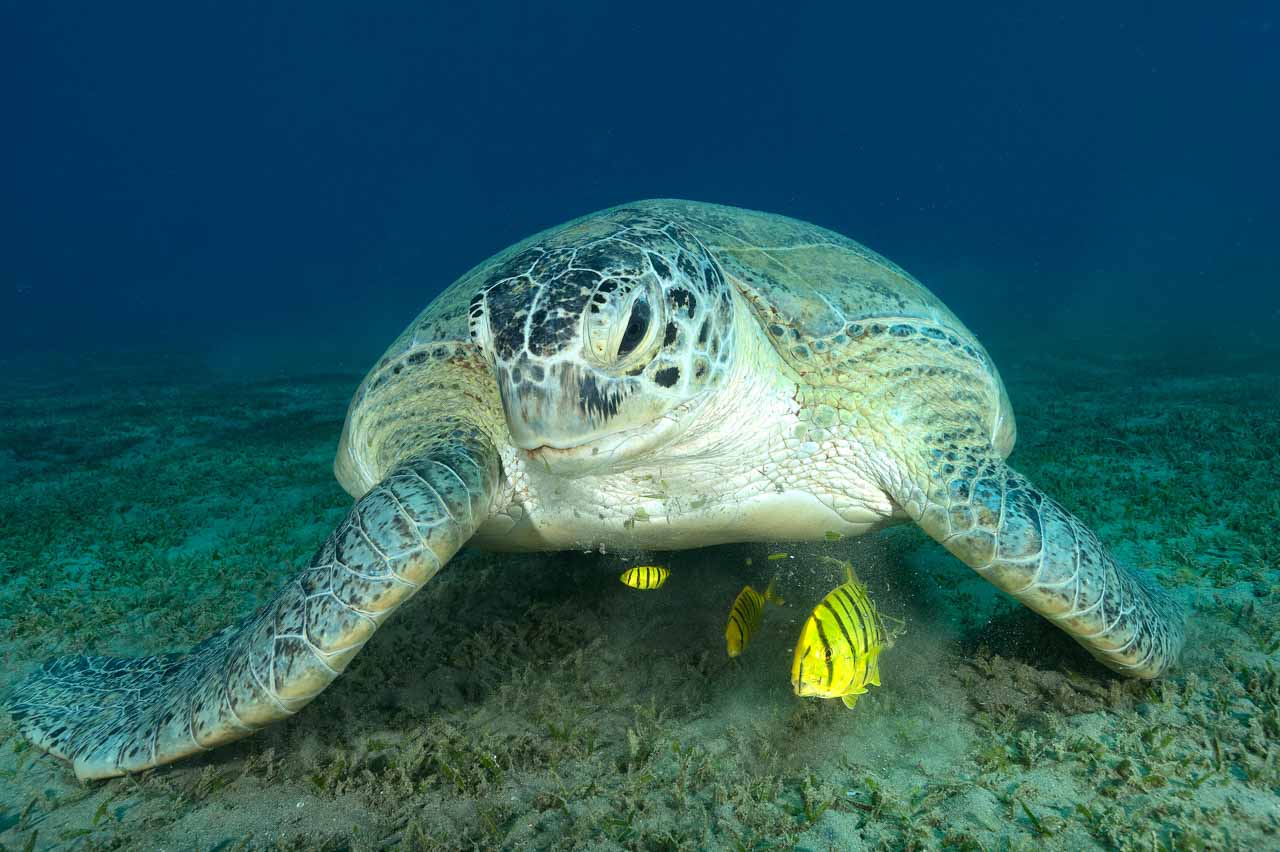A Good Reason to Dive in the Southern Red Sea Often
There are two questions that I am always asked during underwater photography workshops. They are, “Why are you never tired of diving in the Red Sea?” and “How can I create beautiful underwater photographs?”.
The answers to these very different questions are closely linked: a photographer can create a beautiful series of photographs if he is very familiar with the places where he dives. This is why I dive in the Red Sea so often.

Underwater Photography: a Very Complex Field
Underwater photography is a field where it is easy to take creative and unique pictures, but few photographers dive. Some are afraid of water, others cannot swim, and yet others are afraid of strange creatures from the depths. Because of this, it is very easy for a photographer to take unusual pictures of something that most people have never seen. The majority of people have never had an opportunity to discover the beauty of the big blue.
A picture of a seahorse, a dolphin, a shark, or a manta ray is always going to surprise an audience that is unfamiliar with underwater photography.
However, underwater photography is also the most complex and difficult field in photography. The greatest problem is that the time available to take pictures is very limited. One hour is the longest that a good diver can stay down on one dive. The number of dives is limited to 2 or 3 per day. Over the course of a week, a photographer is limited to 15 or 16 hours of shooting, at best. When compared to wildlife or landscape photography, that is very little time.
An underwater photographer also has to know a wide variety of techniques: super wide angle, wide angle, close, close-up, and macro. He must master artificial lighting perfectly. A land photographer, in contrast, usually specializes in wide-angle or close-up, and uses mostly natural light.
Finally, underwater photography is very time-consuming, yet the amount of time actually spent taking photos is very short. All of these factors combine to make underwater photography the most complex and difficult area of photography that we know of.
Getting to know a dive site takes time
If we consider the above criteria, it is easy to understand why an underwater photographer whose sole purpose is to visit as many locations around the world as he can is unlikely to create a beautiful series of photographs. With any luck, he will certainly succeed in taking home some original shots of exotic and unfamiliar creatures. But is it likely that these pictures will be beautiful artistic creations, or that they will, taken together, form a consistent series? Probably not.
I have dived in the Red Sea hundreds of times. I know many sites, from the North, in the Strait of Tiran, to the South, where the Red Sea borders on Sudan, yet I never get tired of it. Every dive reveals some wonder, something beautiful, that I have never seen before. Even at sites where I have dived dozens of times, I always take some pictures that I have never thought of taking before. Diving to the same site several times allows me to understand the light better and compose my photographs better.
However, I also love traveling and discovering new areas. If I am diving somewhere for the first time, I always choose sites that can be reached from the shore. That way, I can familiarize myself with the environment and the species that are found there. By diving to the same place several times, I am able to capture the atmosphere of the region and create beautiful photos.
The Best Way to Dive is From the Beach
The best way to dive, for an underwater photographer, is from the shore. Diving cruises or diving from a boat have a great disadvantage: they make us dive at the same time every day. Life on a boat has a fixed schedule, because we are relying on other people. The crew have to fill the scuba tanks before we can dive; the cook makes meals at the same time every day. This fixed rhythm of life does not allow a photographer to dive at the time when the lighting will be best. The cook fixes breakfast at 7:00, and I have to be there for it. That means that I have often had to dive before the sun was up, missing the golden hour of dawn, because I had to be back for breakfast. I have wasted a lot of dives to beautiful sites because I had to dive at a certain time. If I had been able to wait even 30 minutes, everything would have been different.
The southern Red Sea has an extraordinary reef that extends from Marsa Alam to the Fury Shoals. It is called the Marsa Alam drop-off, and it creates a massive wall all along the coast. It is far enough down that storms do not damage the reef, and a wide variety of fish species and an incredible number of crustaceans shelter there. There are a number of beaches from which the drop-off is accessible.
The best photos I have taken in the Red Sea are from the area around the Marsa Alam drop-off, for two reasons. First, I can dive there whenever I want. There are no constraints on the time I choose. Second, I can dive to the same place as many times as I want.
Changing my approach when I dive to the same site several times
When I dive from the drop-off, I never approach a site the same way twice. I change my lens several times so that the compositions will be different. Changing my lenses and changing the time I dive allows me to combine different lighting and different perspectives to create unique photographs.
Finally
This technique of diving to the same site many times and varying the shooting technique each time I dive is only my opinion. Knowing the area and diving to the same site several times have enabled me to create beautiful photographs. When I dive to a site for the first time, I very rarely create interesting photos. This is why the southern Red Sea is a paradise for me.




Add comment